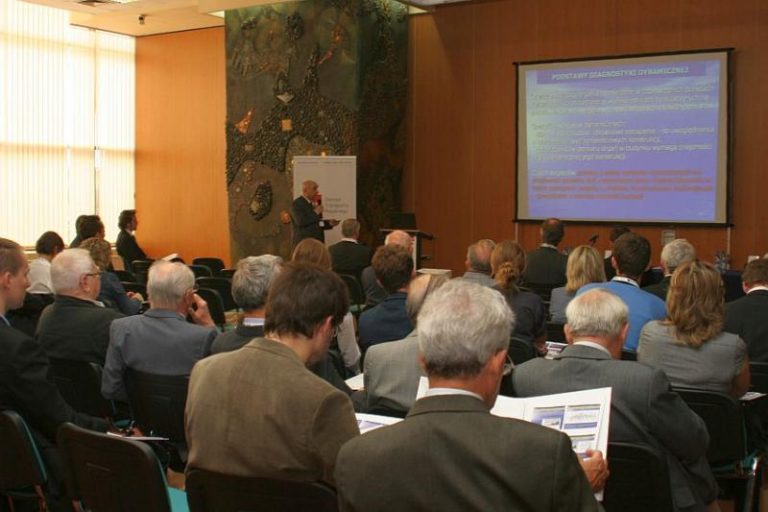
The influence of the underground construction on buildings and people, a role of the underground in Warsaw transport system and juxtaposition of the Warsaw and Paris underground were the main topics of the conference “Underground as a city-forming factor: threats and benefits” organized by ZTM on 22 September. Prominent experts presented their papers.
The conference was opened by ZTM director Leszek Ruta, and presented the biggest benefits of the underground in Warsaw.
Prof. Krzysztof Stypuła from the Cracow University of Technology discussed the influence that the tunnel excavation and then trains running underground will have on buildings and people. He presented research methods applied to measure vibrations and to predict their influence on the living conditions of people and on buildings. He also introduced new technologies that ensure security and reduce negative consequences. The audience was informed among others, that the acceptable level of vibrations is precisely fixed depending on the time of a day or type of the rooms in the objects on the surface. For example, in an operating room the level of vibrations cannot exceed a threshold of its perception, “a hand of a surgeon holding a scalpel cannot tremble.” The level of vibration in flats during a day can be more perceptible while at night should not disturb sleep.
Dr Andrzej Brzeziński from the Warsaw University of Technology reminded the most important dates from the history of the underground construction and documents that determined the directions of transport development in Warsaw. He discussed the role which the underground plays in Warsaw transport system. Further, he analyzed the increase of importance of that means of transport over the years and consequences for transport system and travel habits of the inhabitants after opening the II underground line. According to the estimations, the number of passengers using the underground over one rush hour will increase to 83 thousand after opening the central section and to 168 thousand after opening the whole line. It is estimated that underground transport will make up 18 per cent in public transport in 2015, and in 2035 – 26 per cent. The underground then will be more popular than trams. The number of passengers using Świętokrzyska Station (where two lines cross) over one rush hour will be the same as the number of passengers using Politechnika Station over twenty-four hours at present. The co-author of Warsaw transport strategy emphasized positive approach of the city dwellers to the construction of the II Underground Line, which is considered as the most urgent investment. Talking about threats, he pointed to the need for effective and economical use of the city budget funds, reasonable arrangement of the area on the tunnel surface, and stimulation of transport usage by e.g. construction of new park & ride areas at the outskirts stations.
Andrzej M. Chołdzyński, a world famous architect, who is among others, an author of the concept design of the main II Underground Line, compared the undergrounds in Paris and Warsaw. He presented among others, benefits and threats related to development and functioning of the underground in the cities. He pointed out that Warsaw is a better city to live in than Paris. The conclusion results from population density. In Warsaw there are approximately 3.3 thousand people per km2, and in Paris – 21.2 thousand people per km2. Warsaw has approximately 1.7 million inhabitants, and Paris has about 2.3 million inhabitants within the administrative boundaries, but on the territory five times smaller than Warsaw. The area of Paris is 87 km2 and of Warsaw – 517 km2.
Such a high density in Paris results from a very dense network of underground. In the Paris center, an underground station is located within the area of 500 meters. The architect does not recommend building a dense network, because the city will become overcrowded. Assuming the high quality of life and unchanged administrative border of Warsaw, the number of the city dwellers can be doubled and it will be an optimal number of people in Warsaw.
Zbigniew Chęć, the director of the Department for Preparation and Execution of ZTM Investments, summarized the conference.
Published 22 September 2011
Last modified 3 June 2019


